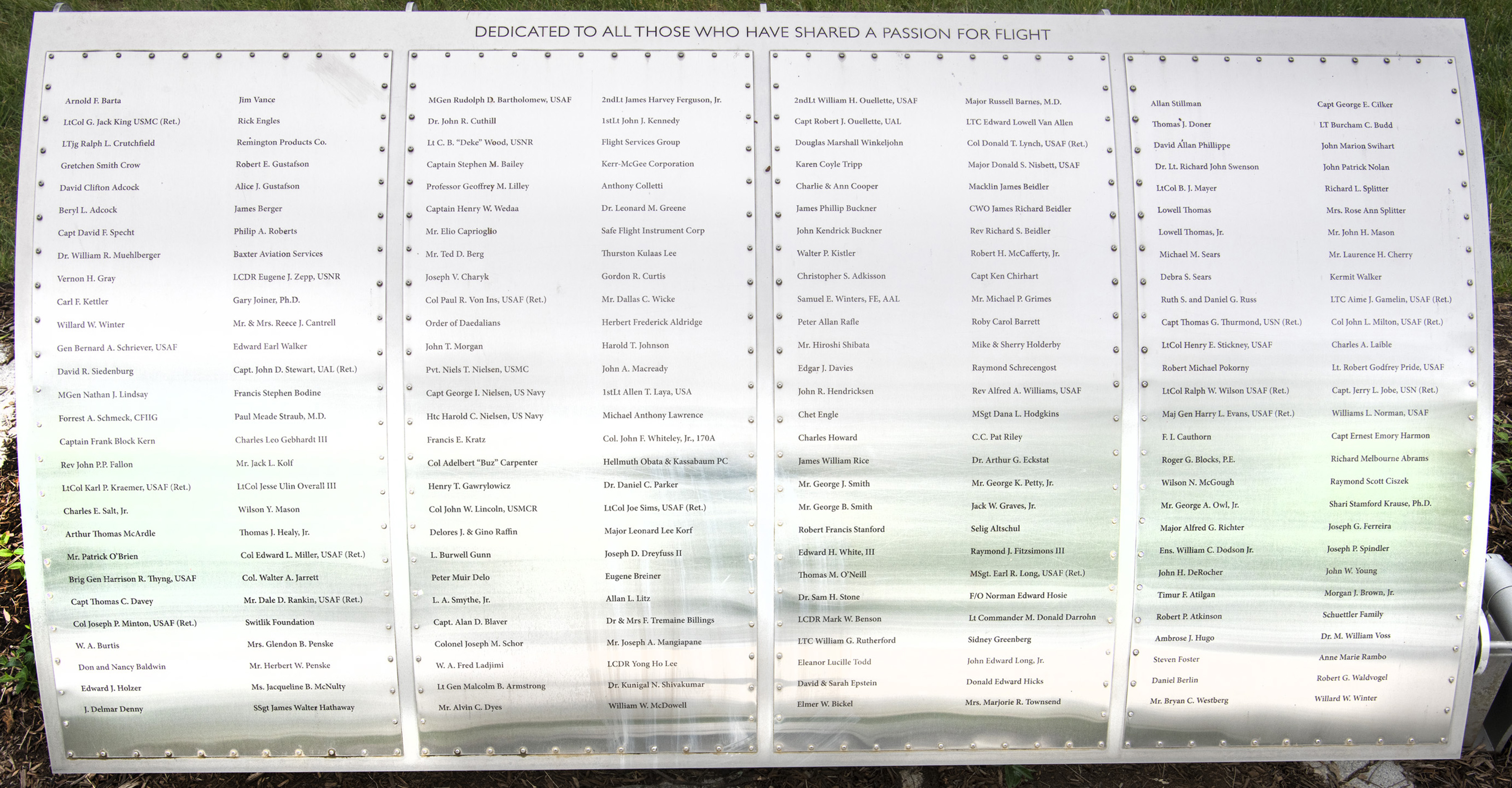
Foil: 26 Panel: 3 Column: 1 Line: 25
Wall of Honor Level: Air and Space Sponsor
Honored by:
Dr. John W. Rutherford
LTC William G. Rutherford, USA (Ret) is recognized for a lifelong career in aviation. His experience includes 22 years as a rated military pilot having earned Master Army Aviator wings. During his military career he logged over 9500 flying hours all over the world. Of these, over 500 hours were actual instrument flying and over 5800 hours were in multi-engine aircraft. He was an instrument flight examiner, held a special instrument rating (Military) and a FAA Commercial, Multi-engine Instrument rating. He advanced aviation as a pilot, a teacher, and after his Army career, as an executive with Beech Aircraft.
During WW II, Mr. Rutherford participated in the Chinese Air Force Training Program as an instructor in the United States and was awarded in July 1946, with the approval of the US War Department, the wings of the Chinese Air Force for his meritorious service in this program.
Serving with the 3rd Infantry Division Artillery during Korean War, he flew over 180 combat observation/reconnaissance missions. On one of these missions, he received the Silver Star medal for his actions on 18 January 1952. He voluntarily flew an unarmed liaison-type aircraft in the vicinity of Ch'ang-dong, Korea to adjust artillery fire on reported supply areas, bivouac areas and large numbers of enemy personnel at a distance of 15,000 yards beyond the Division's main line of resistance. Flying through intense antiaircraft fire of various caliber, he located enemy troops on the march and accurately directed the forward's battery's fire, rendering 50% enemy casualties. He remained in the area, under constant antiaircraft and automatic weapons fire and fearlessly pinpointed five camouflaged positions, two supply areas and numerous personnel in a training area and directed fire on these positions. Only after bringing fire on all profitable targets and being dangerously low on fuel did he return to base. He also received the Air Medal with four bronze oak leaf clusters and the Bronze Star Medal for his Korean service.
After the Korean War, Mr. Rutherford was assigned to Davidson Army Airfield, Ft. Belvoir, Virginia, where he was responsible for all Army flights for the White House. He also established an instrument training program there.
From 1958-1961 Mr. Rutherford served in several aviation positions in Europe. As the Aviation Staff Officer, US Army Engineer Division, Mediterranean he organized and established operational policies, procedures and maintenance support for aircraft in support of military construction covering an area extending from Morocco to Pakistan. He was also the personal pilot for the Division Engineer. Transferred to Germany later in this tour, he became the Operations Officer, Flight Detachment, US Army, Europe. In this position he also served as the personal pilot to the Commander in Chief, US Army, Europe.
Returning from Europe to the Washington D.C. area, Mr. Rutherford held numerous aviation positions including the Headquarters Military District of Washington, US Army Aviation Officer. In this capacity he advised the Commanding General on all Army aviation matters in support of the Department of Defense, Congressional Liaison, and the White House. He also served as President of the Military District of Washington Instrument Examiner Board and was a member of the Washington, DC Federal Aeronautics Administration Air Space Coordinating Committee. He finished his US Army career as the Deputy Commander, Davidson Army Airfield.
Mr. Rutherford continued his aviation career with Beech Aircraft Corp. after retiring from the US Army in 1967. Here he ultimately rose to the position of Vic president of Government Relations. In this capacity, he continued to fly and advocated the importance of aviation in support of the Armed forces. After retiring from Beech Aircraft in 1987, flight continued to be a part of his life as he returned to flying a modern version of the single engine, light aircraft in which he began n.
He finally gave up flying in 1996, after over a half century of flying experience around the world in a variety of aircraft types.
Wall of Honor profiles are provided by the honoree or the donor who added their name to the Wall of Honor. The Museum cannot validate all facts contained in the profiles.
Foil: 26
